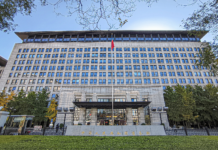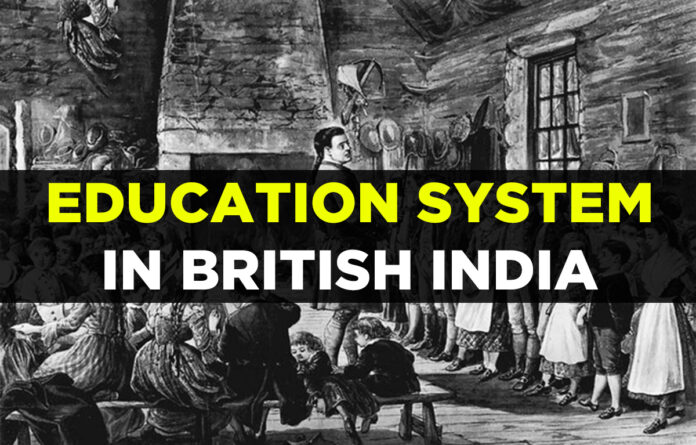The Indian education system underwent significant changes during the period of British colonial rule, which lasted for nearly two centuries, from the mid-18th century to 1947 when India gained independence. The British colonial government implemented policies and introduced educational institutions that had a profound and lasting impact on the Indian education system.
The key features and developments of the Indian education system under British rule include: a. Introduction of English Education: The British colonial administrators believed that education in the English language was a means to spread British culture, values, and governance in India. They established English-medium schools and colleges, which were often reserved for the elite or the privileged classes. English became the medium of instruction in many institutions. b. Macaulay’s Minute (1835): Lord Macaulay’s famous “Minute on Education” in 1835 played a pivotal role in shaping the Indian education system. He argued for the promotion of English education and the decline of traditional Indian languages and knowledge systems. This led to the neglect of vernacular languages and indigenous educational traditions. c. Establishment of Universities: The British colonial government established universities in major cities like Calcutta (now Kolkata), Bombay (now Mumbai), and Madras (now Chennai) in the mid-19th century. These universities played a significant role in higher education and research but followed a Western curriculum. d. Emphasis on Western Curriculum: The curriculum in schools and colleges was heavily influenced by British educational models. It focused on subjects such as English literature, science, and mathematics while neglecting traditional Indian subjects like philosophy, literature, and arts. e. Differential Access to Education: The British education system created a hierarchy of educational opportunities. While some Indians, primarily from the upper castes and the elite, had access to quality English education, the majority of the population had limited access to education. This created a stark divide in educational opportunities and access. f. Impact on Indigenous Systems: The traditional Indian education system, which included Gurukuls and Madrasas, faced a decline during British rule. These systems were often marginalized or suppressed in favor of the British model of education. g. Role in Indian Reform Movements: However, despite its many shortcomings, the British education system played a role in the social and political reform movements in India.
After completing their A-levels or vocational qualifications, students have the opportunity to attend a university. Bachelor’s degrees typically take three to four years to complete. Degree Classification: British universities use a degree classification system, with first-class, upper second-class (2:1), lower second-class (2:2), and third-class degrees. Students are assessed through a combination of coursework and examinations.
Educated Indians, exposed to Western ideas of democracy, freedom, and human rights, began to demand political reforms and eventually independence. While it introduced modern education and created opportunities for some Indians, it also perpetuated inequalities and marginalized traditional educational systems.
The British education system, like any education system, has a set of overarching aims and objectives that guide its policies and practices. These aims reflect the broader goals of education in the United Kingdom and are designed to prepare students for personal, social, and professional success.
The specific aims of the British education system include: a. Access and Inclusivity: Ensure that education is accessible to all students, regardless of their background, abilities, or disabilities. Promote inclusivity and diversity within schools and educational institutions. b. Educational Excellence: Foster high academic standards and promote excellence in teaching and learning. Encourage students to achieve their full potential academically and intellectually. c. Holistic Development: Focus on the holistic development of students, including their intellectual, physical, emotional, and social growth. Develop well-rounded individuals who are capable of critical thinking, creativity, and problem-solving. d. Preparation for Life: Equip students with the knowledge, skills, and values necessary to succeed in their personal and professional lives. Prepare students to be responsible citizens who contribute positively to society. e. Social Cohesion: Promote social cohesion by fostering a sense of belonging, tolerance, and respect among students from diverse backgrounds. Encourage students to be active and engaged members of their communities. f. Cultural Awareness and Global Citizenship: Develop an understanding and appreciation of different cultures, values, and traditions. Promote global citizenship by preparing students to be aware of and engaged with global issues and challenges. g. Preparation for Higher Education and Careers: Prepare students for further education, including university or vocational training. Provide vocational and career-focused education and training to enable students to enter the workforce with relevant skills and qualifications. h. Well-Being and Mental Health: Prioritize the well-being and mental health of students, providing support and resources to address emotional and psychological needs. Create a positive and supportive learning environment. i. Assessment and Accountability: Implement fair and effective assessment methods to measure student progress and outcomes. Ensure accountability in education through transparent evaluation and quality assurance processes. Additionally, the British education system encompasses different stages of education, from early years education to higher education, each with its own specific aims and objectives aligned with the overall goals of the system.
The basics of the British education system include: a. Early Years Education: Nursery or Preschool (Ages 3-4): Children typically start their formal education in nursery or preschool, which is not mandatory but provides a foundation for learning through play and social interaction. b. Primary Education: Primary School (Ages 5-11): Primary education in the UK typically begins at age 5 and continues until age 11. Pupils in primary school study a broad range of subjects, including mathematics, English, science, and others. They also develop key skills in literacy and numeracy. c Secondary Education: Secondary School (Ages 11-16): Secondary education starts at age 11 and continues until age 16. Students in secondary school usually follow a standardized curriculum, which includes subjects like mathematics, English, science, history, geography, and others. At the end of this phase, they typically take General Certificate of Secondary Education (GCSE) examinations. d. GCSE Examinations: GCSEs are subject-based qualifications that students take at the end of compulsory education. They are important for future academic and career choices. Students typically study a set of core subjects and optional subjects of their choice. e. Post-16 Education: Sixth Form or College (Ages 16-18): After completing their GCSEs, students have the option to continue their education in a sixth form or college. Now, they can choose to study A-levels (Advanced Level) or vocational courses. A-levels are subject-based qualifications and are often a requirement for university admission. Vocational Courses: Some students opt for vocational courses such as BTECs (Business and Technology Education Council) or apprenticeships, which provide more hands-on, practical training. f, Higher Education: University (Ages 18+): After completing their A-levels or vocational qualifications, students have the opportunity to attend a university. Bachelor’s degrees typically take three to four years to complete. Degree Classification: British universities use a degree classification system, with first-class, upper second-class (2:1), lower second-class (2:2), and third-class degrees. Students are assessed through a combination of coursework and examinations.






















